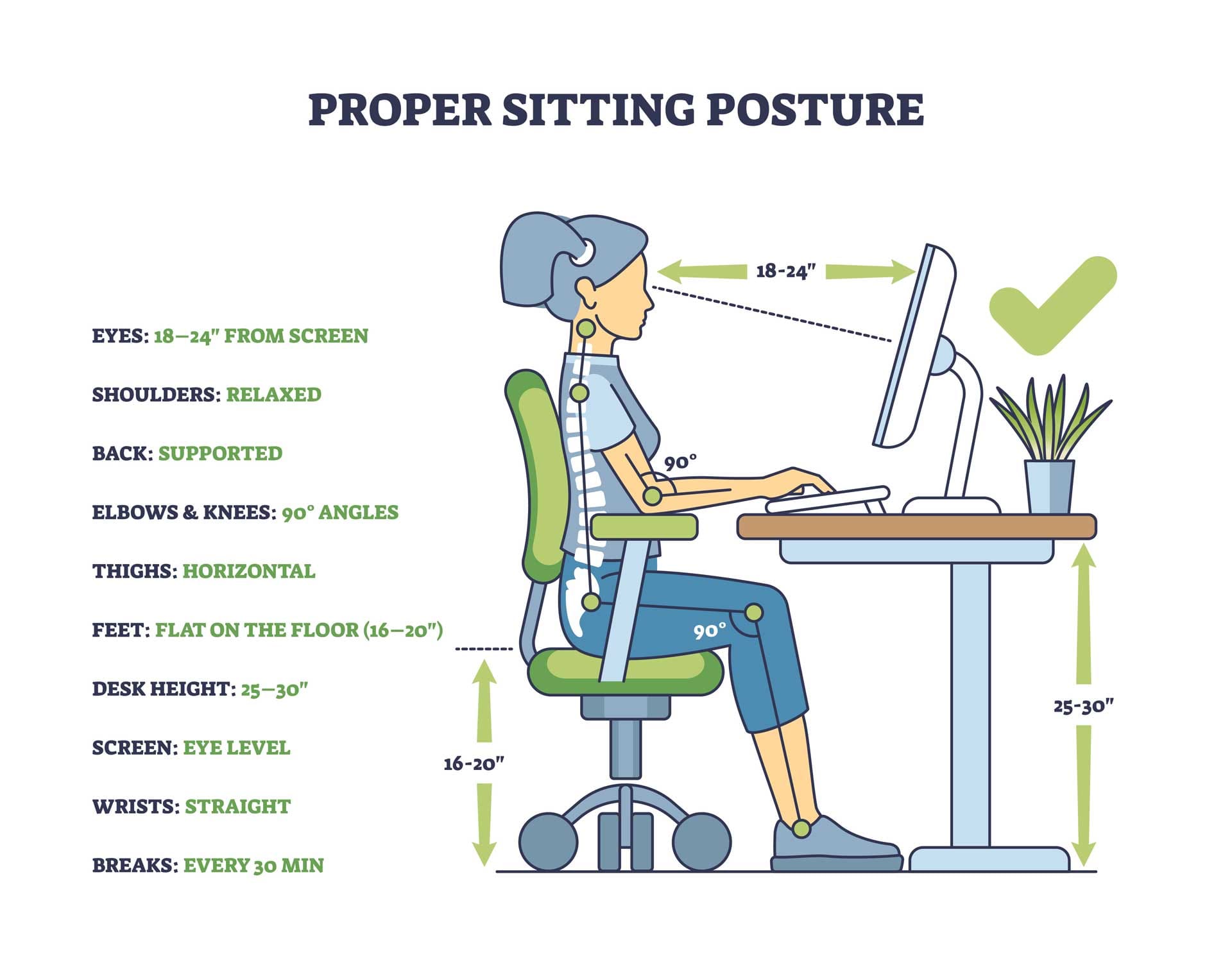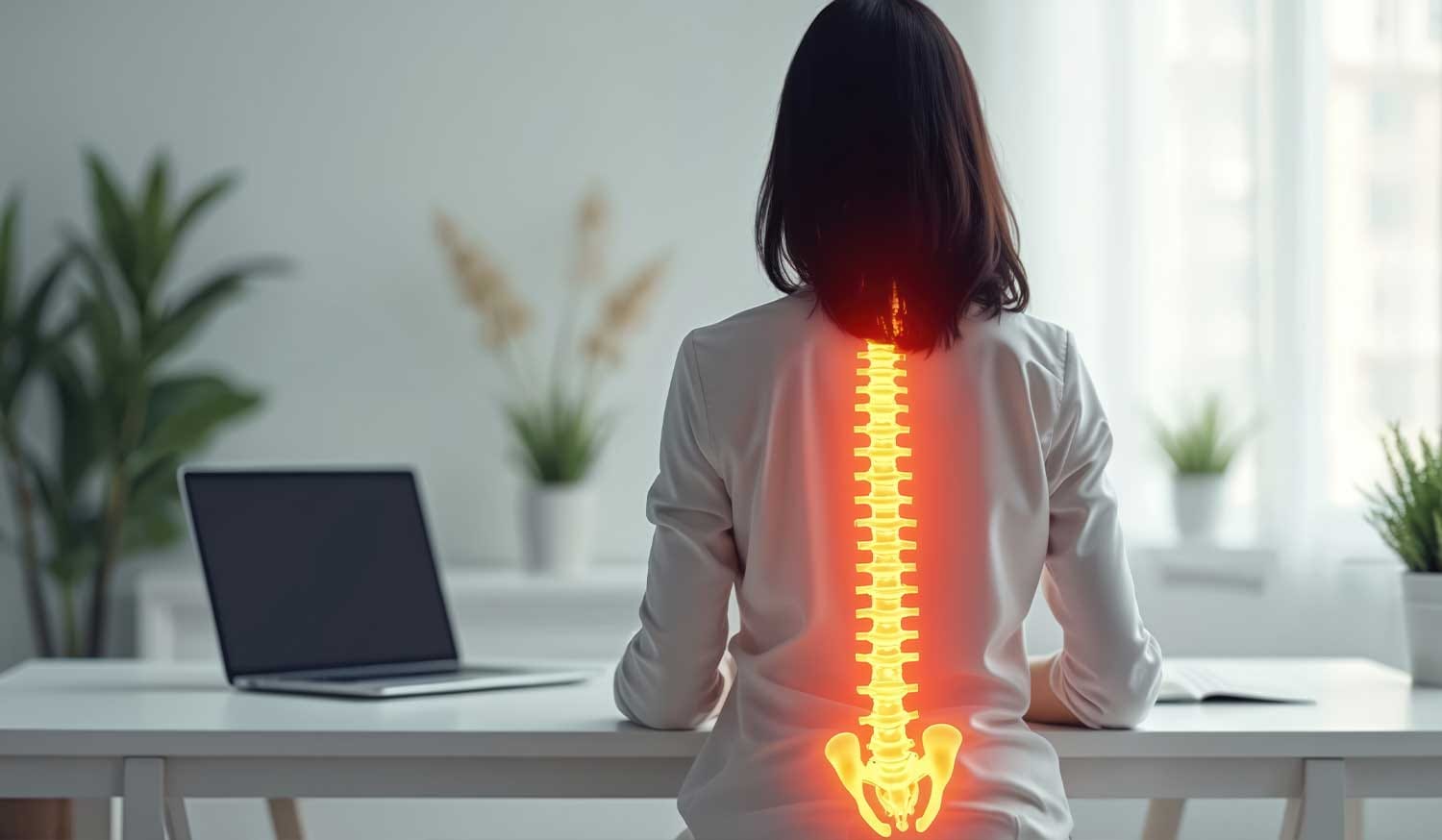Discover the optimal sitting position to alleviate lower back pain, as recommended by qualified osteopaths at MHV Clinic. Improve posture, reduce discomfort, and support spinal health with expert guidance.

Sitting for prolonged periods can exacerbate or even trigger lower back pain, especially if posture is neglected. Consequently, understanding the best sitting position for lower back pain relief is crucial for millions of people who spend a significant portion of their day seated. As osteopathic practitioners, we combine evidence-based manual therapy with tailored ergonomic advice to help patients achieve sustainable pain relief. By integrating osteopathic principles, we not only address current discomfort but also promote long-term spinal health and well-being. The Advertising Standards Authority recognises Osteopathy as a legitimate treatment for general, acute and chronic backache, including lumbago asa.org.uk. Moreover, osteopaths in the UK are regulated by statute under the Osteopaths Act 1993, ensuring patient safety and upholding professional standards (osteopathy.org.uk).
Firstly, lower back pain often arises from mechanical stress or strain on the lumbar spine, which can result from muscle imbalance, poor posture, or overuse of NHS. Secondly, underlying conditions—such as disc herniation or sciatica—may contribute to symptoms; however, most cases are classified as non-specific and resolved with conservative management (nice.org.uk). Additionally, psychosocial factors like stress and sedentary behaviour can influence pain perception and recovery. Therefore, a comprehensive approach that combines ergonomic corrections, targeted exercises, and manual therapy is recommended by NICE for the effective management of lower back pain (nice.org.uk).
Moreover, prolonged sitting alters the normal curvature of the spine, increasing intradiscal pressure and placing strain on the lumbar muscles and ligaments. As the Cambridge University Hospitals NHS Foundation Trust explains, maintaining the natural ‘S’-shaped spinal curves distributes weight evenly and reduces muscular fatigue cup.nhs.uk. In addition, sitting without proper lumbar support forces the pelvis into a posterior tilt, flattening the lumbar lordosis and loading the intervertebral discs unevenly in southwest Yorkshire.nhs.uk. Consequently, adapting one’s sitting posture is not just about comfort—it’s about protecting the structural integrity of the spine over time.
From an osteopathic standpoint, posture is dynamic and influenced by muscular, skeletal and fascial systems. Osteopaths employ manual techniques—such as articulation and soft-tissue manipulation—to restore joint mobility and alleviate myofascial restrictions, which in turn facilitates better posture when seated. Furthermore, NICE guidelines recommend manual therapy as part of a multimodal treatment package that includes exercise and self-management advice for low back pain nice.org.uk. Therefore, combining hands-on care with tailored ergonomic recommendations offers a holistic route to both immediate relief and long-term spinal resilience.
To achieve the optimal sitting position lower back relief, implement the following evidence-based guidelines:
By consistently applying these adjustments, you encourage a neutral spinal posture, thereby reducing cumulative stress on lumbar structures.

However, even the best sitting posture will fail if held statically for hours. NHS Inform recommends changing positions regularly and incorporating micro-breaks to mitigate stiffness and muscle fatigue NHS inform. scot. Specifically, stand or walk for 2–3 minutes every 30 minutes and perform gentle lumbar rotations or hip flexion stretches to lubricate the joints and activate the postural muscles. Consequently, movement serves as a dynamic complement to static ergonomic corrections, optimising spinal health.
In addition to posture adjustments, targeted exercises strengthen the core and paraspinal musculature, which underpins sustained spinal alignment. For example:
Moreover, ergonomic accessories—such as adjustable footrests, seat cushions and lumbar rolls—can be integrated into daily routines to reinforce correct posture.
Whether at home, in the office or driving, adapting the principles of spinal alignment is essential:
By tailoring ergonomic strategies to each context, you ensure that optimal sitting position lower back relief is accessible wherever you spend time seated.

Nevertheless, if lower back pain persists despite self-management, it may warrant a professional assessment. Red flags—such as severe or worsening pain, neurological symptoms (e.g., tingling, numbness), or constitutional signs (e.g., fever, unexplained weight loss)—should prompt medical review. Osteopaths can perform a thorough musculoskeletal evaluation, identify contributing factors, and integrate manual therapy with bespoke exercise prescriptions. As regulated healthcare professionals, osteopaths maintain high standards of practice and refer to medical services when necessary asa.org.uk.
To ensure safe and effective care, select an osteopath registered with the General Osteopathic Council (GOsC). Registration confirms adherence to statutory standards for education, professional conduct, and continuing professional development osteopathy.org.uk. Additionally, practitioners who comply with ASA guidelines on health-related advertising provide transparent, evidence-based information about their services. Look for websites that reference ASA AdviceOnline entries and published rulings to verify credibility at asa.org.uk.
In summary, adopting the best sitting position for lower back pain relief involves making ergonomic adjustments, engaging in regular movement, and practising supportive exercises—all underpinned by osteopathic principles. By integrating these strategies, you enhance spinal alignment, reduce disc and muscle strain, and cultivate sustainable postural habits. Consequently, you empower yourself to manage lower back pain more effectively. If you’re ready to take the next step, book a consultation with an experienced osteopath at MHV Clinic to receive personalised assessment and care tailored to your needs.